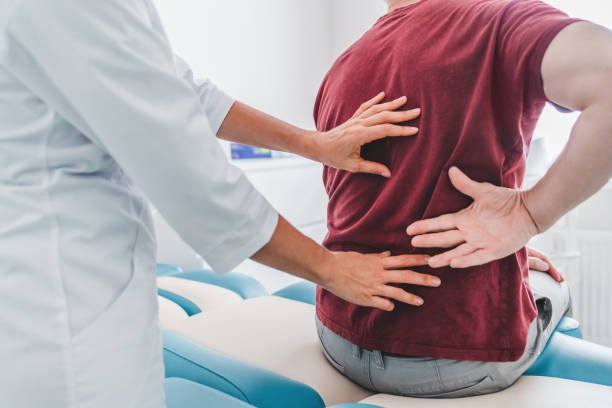Spine care
However, if you’ve ever had back or neck discomfort of any kind, or you know someone who has, you are aware of its potential negative effects on quality of life. And someone may be forced to forgo certain hobbies, may become more sedentary, or may even find it difficult to perform their work if they experience even mild or moderate back or neck pain. At its worst, spine discomfort can even necessitate a trip to the ER. Additionally, persistent pain can lead to psychological suffering such as sadness and melancholy.
The underlying underpinning of the entire body is the remarkable, beautifully balanced human spine. The spine, which is gently bent into a S shape, balances the neck, chest, lower back, and pelvis to maintain the head, trunk, and legs in place.The spinal cord, which serves as the primary nerve supply for the body, as well as some internal organs are provided with a protective coating by it. It gives us the framework we need to keep our upright posture. In fact, every movement we make engages the spine, which flexes to allow for flexibility of motion.


What Causes Back or Neck Pain?
The spine is made up of 33 interconnected vertebrae that are cushioned and joined by cartilage and connective tissue. Facet joints, which connect these vertebrae, can experience pain, inflammation, and degeneration just like other joints in the body. When vertebrae, facet joints, or other spinal components experience the long-term effects of an injury, bad posture, inactivity, excessive sitting, or specific disorders, pain in the back or neck may result.
Nearly everyone will eventually experience a spinal problem. By the time they reach the age of 25, one in four people have some degree of disc degeneration, which affects the cartilage pads that separate the vertebrae and serve as shock absorbers. At age 40, two-thirds of adults exhibit disc degeneration; by age 60, 90 percent are impacted. This trend is a typical side effect of gravity and aging over time. Additionally, not all adults exhibit the signs of this degeneration, despite the fact that most individuals are affected.Frequently, it doesn’t start to hurt until it’s at a severe level.
10 Tips for Maintaining a Healthy Spine
- Stretch and strengthen the back
The key to long-term success in managing and reducing back pain is motivated patients who regularly follow a routine of tailored stretching and strengthening exercises.
Hold onto a healthy weight
Unnecessary physical stress on the spine can be caused by excess weight. In addition, carrying around extra weight increases your risk of contracting additional illnesses or physical disorders that could weaken your spine even more or exasperate current problems.
Smoke less
A vasoconstrictor, nicotine constricts blood vessels, decreasing blood flow and restricting oxygen and nutrition to the spine. Vasoconstriction has the potential to hasten inflammatory processes and bodily aging both in the spine and elsewhere.
When lifting big objects, use caution.
Bending to lift a big object puts a lot of strain on the spine. When lifting, use proper technique: When lifting something heavy, keep your back straight, bend your knees, and use your legs’ strength.
Cut back on or avoid inflammatory foods
Keep moving
It is detrimental to the spine to spend a lot of time in one position. If you must sit for extended periods of time at work, take frequent breaks to keep the spine active. To maintain your back supple and flexible, move around, take walks, and occasionally work out or stretch.
Enter the water
While it comes to treating back problems, water treatment can be especially beneficial for senior individuals or those who are really uncomfortable while using a land-based method. Exercise in the water can be a powerful technique to develop confidence and strength and prepare for eventual land therapy.
Ask a doctor for guidance.
It seems sense to get medical help if back or neck pain is chronic, flares up frequently, or never completely goes away. Your primary care physician will examine you for any sciatica, tingling, or other signs of nerve involvement.
Benefits of Movement and Activity
- It provides tissues with all necessary substances.
- If these systems are not kept up with, the body is vulnerable when under mental stress.
- Exercise is the best approach to maintain efficient circulation. This promotes the activation of the muscle and cardiac pumps.
- Remember that your body and its muscles are used to the postures and activities you typically engage in, so while doing one-off activities, such as decorating the hall, playing badminton for the first time in years, or participating in the school's parents race, be careful.

